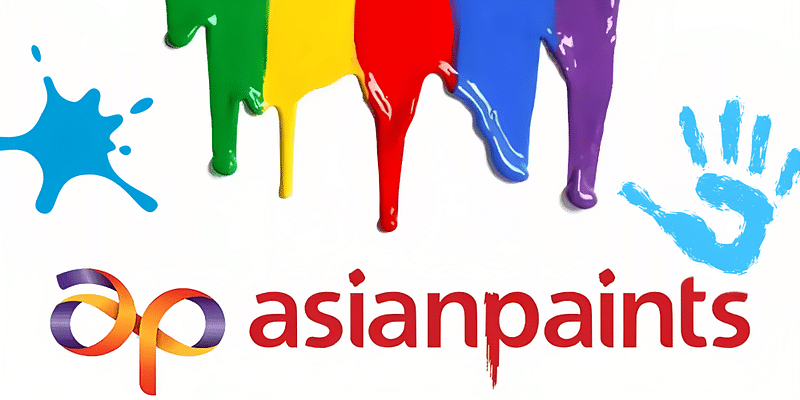Experience India’s heritage and history using augmented reality thanks to Augtraveler
Delhi-based Augtraveler built an AR app and platform that uses technology and multimedia content to help consumers learn about and interact with sites and monuments.
Let’s accept it - history was not the most interesting subject in school. Yet, when we travel to a new city or country, we are excited about seeing its historical sites and monuments. That would imply that history can be interesting but only when you can touch it, feel it, and even experience it.
And that’s what augmented-reality heritage (AR) startup Augtraveler is attempting to do.

“Unlike the western world, little focus is given towards a traveller’s experience at a heritage site in India,” says Pankaj Manchanda, Founder of Augtraveler.
He believes that many people perceive heritage sites in India as picnic spots and don’t think they need to learn anything from them. There is a big problem in the way monuments in India are treated. Joining forces with edtech entrepreneur and investor Manish Upadhyay, Pankaj started Augtraveler in Delhi to change this scenario. With two decades of experience in education, the two formerly built a content and training technology platform, LIQVID.
Their latest venture, Augtraveler is an AR app that uses technology and content to narrate the history of a particular heritage site, its background and importance, allowing users to really understand its significance. Pankaj’s idea is to get a visitor to appreciate the history and the work associated with a monument.
“If I take my child to the Red Fort today, there would be a bunch of tour guides hounding us to pass on heresay as ‘history’. While hearing the history right at the site will create a powerful and a long-lasting impact compared to a classroom textbook session, the experience is just not good enough,” says Pankaj.
Bringing in the AR Layer
The Augtraveler app is compatible with both Android and Apple phones. It has a layer of AR that allows users to interact with a particular part of the monument structure by recreating different scenarios. Why? “The minute you give accessible information to an individual, which they can play with, learning happens at a faster pace,” says Pankaj.
The app also allows users to explore the different nuances of artefacts, the architecture and parts of the monument with interactive elements. “It all happens in the context of a storyline,” explains the Co-founder.
For example, if you are at the Iron Pillar of Qutub Minar, the app describes the composition of the pillar, and the inscription text is described and translated in your preferred language. “You also have the option of building the Qutub Minar in 3D, over a timeline of 625 years, where each part of the structure represents a timeline,” says Pankaj.
Basically, your smartphone becomes a magical window to the past, helping you understand not only the history but also walk you through how the heritage site was built, step by step.
The company’s biggest challenge was to ensure the authenticity of the content on the platform. To solve this, the Augtraveler team has been supported by the Archaeological Survey of India to access their content archives and later approached UNESCO's knowledge partners to tie up with its heritage sites.
“With the help of UNESCO, we were able to work with their knowledge partners like The Dronah Foundation, UNESCO Parzor, Sahapedia, etc. This helped and also led us to other partnerships,” says Pankaj.
Entering education
Augtraveler has also tied up with school material publisher Macmillan for experiential learning.
“We created multi-disciplinary content for Macmillan. This means, we have added aspects of geometry, mathematics, science, general knowledge, English and creative arts, which are at par with ICT guidelines. Currently, we are working on a monument-level series like a ‘Quest of the Qutub’,” says Pankaj.
For example, for the Iron Pillar, Augtraveler uses principles of metallurgy, and for its domes and structures, the app uses geometry. Mathematics also comes into play for the different ticket prices. The base idea is to engage the student completely.
Apart from this, Augtraveler also showcases local art, food and trivia that is aimed at including the community into the picture. In turn, the local community can offer products and services like places to eat, shopping hotspots or stores offering local artefacts. At present, the app has heritage walks, which may soon evolve to AR-related navigation walks.
Through Macmillan, Augtraveler aims to reach around 20,000 schools across the country in the next two academic years. Currently, in the beta stage, the app has close to 1,000 users.
The world of audio tours
The idea of audio tours is fast picking up in India. Players like Pune-based Narrowcasters have their audio equipment and headsets at the Red Fort, and there are Blume Ventures-backed Mumbai-based AudioCompass, among others. In its nascent stage, the market is still growing. Additionally, a TechSci report suggests that the AR/VR market in India will grow at a 55.3 percent in the next five years. The country has witnessed over 150 AR/VR startups emerging in the last few years.
Currently bootstrapped, Augtraveler is looking to monetise itself through the educational experiential learning aspect, and aims to charge Rs 100 per monument for one visit per student. For the monument and audio tours, they want to charge close to Rs 300.
“We have tied up with 28 UNESCO monuments, of which, six are completed experiential educational projects,” says Pankaj. The team plans to add more monuments on the platform and acquire more clients.
Augtraveler has also started with a soft launch in the hospitality industry with Hyatt on the concierge desk for conducting tours for Hyatt’s guests.
Globally, there are several apps like HoloMaps and ViewRanger that use virtual mapping and AR to enhance a tourist or visitor’s experience of sites and trails. However, Pankaj says that Augtraveler’s focus on creating an app with an experiential experience sets them apart from the regular AR/VR tourism apps.








![[Weekly funding roundup] Investments into startups decline by 57 pc, closes at $107 million](https://images.yourstory.com/cs/2/f08163002d6c11e9aa979329348d4c3e/Weeklyimage-1577460362436.png)


![[Exclusive] Vauld to seek 3-month moratorium extension as creditors panel explores bailout options](https://images.yourstory.com/cs/2/a09f22505c6411ea9c48a10bad99c62f/VauldStoryCover-01-1667408888809.jpg)